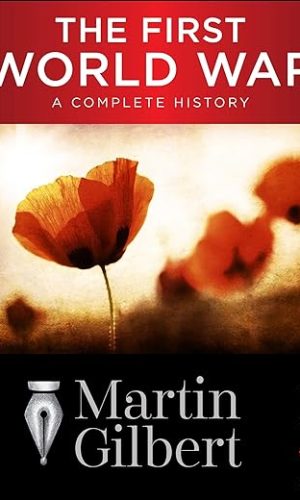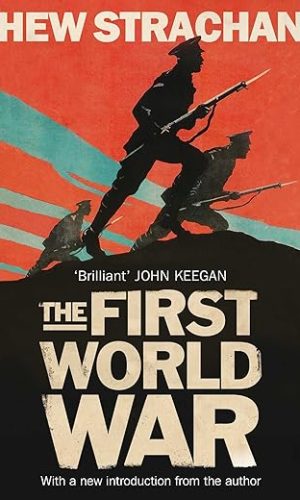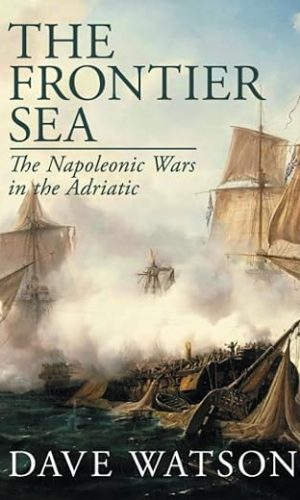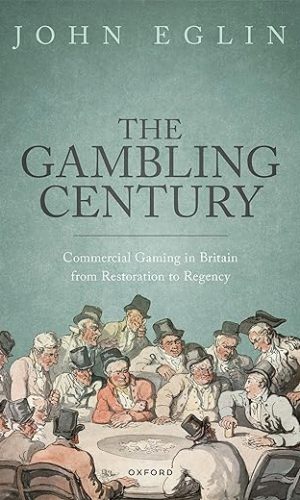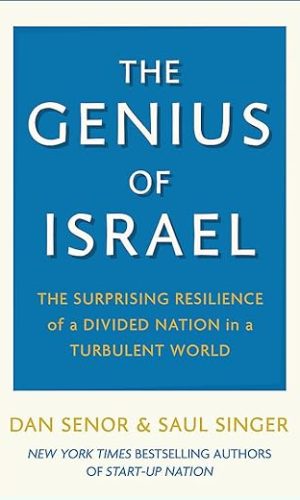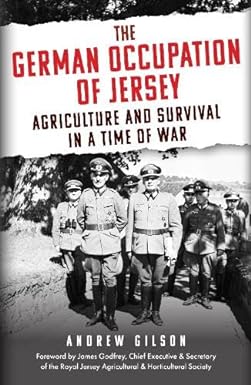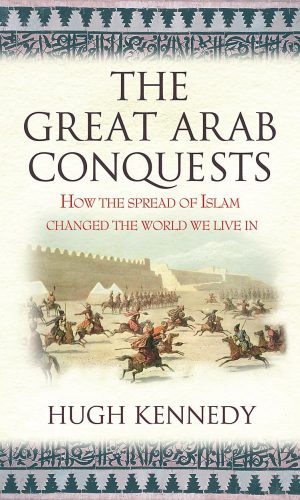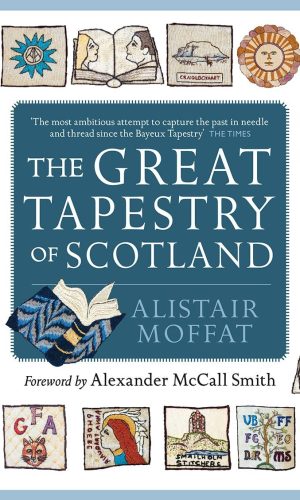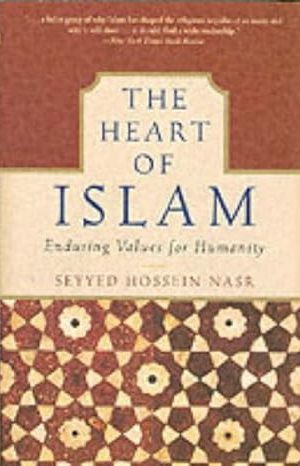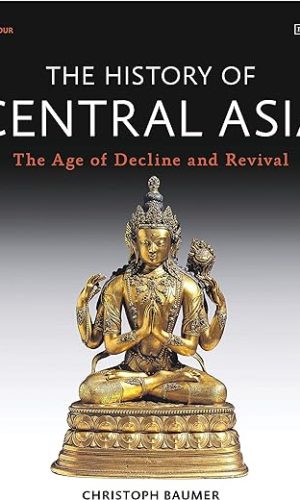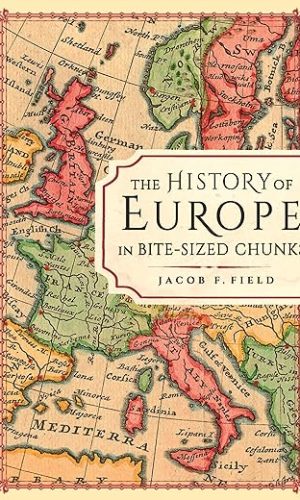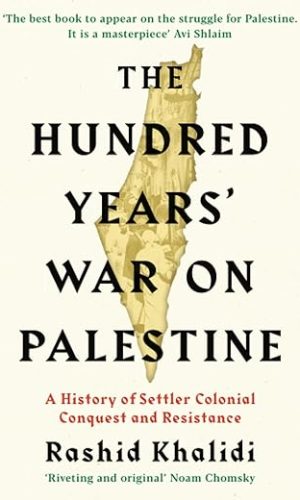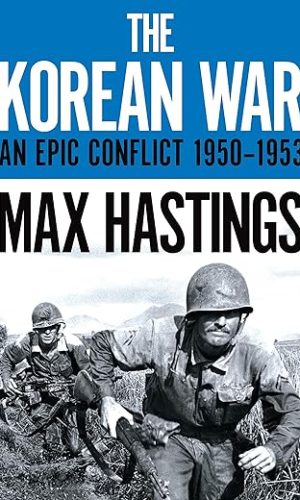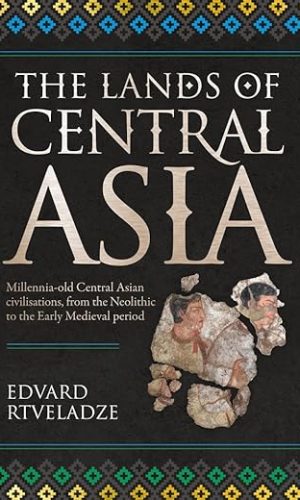-
The First World War: A Complete History
“A stunning achievement of research and storytelling” that weaves together the major fronts of WWI into a single, sweeping narrative (Publishers Weekly, starred review).
It was to be the war to end all wars, and it began at 11:15 on the morning of June 28, 1914, in an outpost of the Austro-Hungarian Empire called Sarajevo. It would officially end nearly five years later. Unofficially, however, it has never ended: Many of the horrors we live with today are rooted in the First World War.
The Great War left millions of civilians and soldiers maimed or dead. It also saw the creation of new technologies of destruction: tanks, planes, and submarines; machine guns and field artillery; poison gas and chemical warfare. It introduced U-boat packs and strategic bombing, unrestricted war on civilians and mistreatment of prisoners. But the war changed our world in far more fundamental ways than these.
In its wake, empires toppled, monarchies fell, and whole populations lost their national identities. As political systems and geographic boundaries were realigned, the social order shifted seismically. Manners and cultural norms; literature and the arts; education and class distinctions; all underwent a vast sea change.
As historian Martin Gilbert demonstrates in this “majestic opus” of historical synthesis, the twentieth century can be said to have been born on that fateful morning in June of 1914 (Publishers Weekly, starred review).
“One of the first books that anyone should read . . . to try to understand this war and this century.” —The New York Times Book Review
Read more
£13.30 -
The First World War: A New History
A brilliant and penetrating new history of the First World War by one of the world’s foremost experts on the conflict. Reissued with a new introduction from the author.Hew Strachan is one of the world’s foremost experts on the Great War of 1914-18. His on-going three-volume history of the conflict, the first of which was published in 2001, is likely to become the standard academic reference work: Max Hastings called it ‘one of the most impressive books of modern history in a generation’, while Richard Holmes hailed it as a ‘towering achievement’.
Now, Hew Strachan brings his immense knowledge to a one-volume work aimed squarely at the general reader. The inspiration behind the major Channel 4 series of the same name, to which Hew was chief consultant, THE FIRST WORLD WAR is a significant addition to the literature on this subject, taking as it does a uniquely global view of what is often misconceived as a prolonged skirmish on the Western Front. Exploring such theatres as the Balkans, Africa and the Ottoman Empire, Strachan assesses Britain’s participation in the light of what became a struggle for the defence of liberalism, and show how the war shaped the ‘short’ twentieth century that followed it.
Accessible, compelling and utterly convincing, this is modern history writing at its finest.
Read more
£7.30£10.40The First World War: A New History
£7.30£10.40 -
The Football 100 (Sports)
From The Athletic, powerhouse of sports reporting, comes the definitive story of the greatest football players of all time.
It is a question that has bedeviled football fans for generations: Who’s the best? Of the more than 25,000 men who have suited up during the NFL’s century of existence, which ones stood head and shoulders above all others?
At The Athletic, home to the best newsroom in sports, this question would become a labor of love for dozens of the best football writers on the planet, including Mike Sando and Dan Pompei. Over the course of 100 riveting profiles–each drawing upon unparalleled access and superlative storytelling to offer intimate perspective on what made the greatest players tick–these writers reveal their findings. In the process, they also uncover the history of football.
In the early days of the NFL, the game bore little resemblance to the product we see today. Points were scarce, the forward pass was an exotic strategic curiosity, and most players played all 60 minutes–both sides of the ball. It was on the shoulders of the many greats who starred in the League over the last century that the game of football blossomed. Each profile in The Football 100 uses the vivid narrative storytelling for which The Athletic is known to bring to life extraordinary athletic talents, tactical geniuses who changed the way the game is played, and legendary, outsized personalities. Based on many hundreds of interviews with players, coaches, broadcasters, and others, this is a penetrating look at the greatest players to ever don cleats and pads, as well as a view from the trenches of the harsh realities of a brutal game. 100 photographs throughout the text offer testament to both the glory and the physical toll of football.
Deeply reported, beautifully written, and sure to spark heated debate among football fans of all stripes, The Football 100 sets a new standard for writing about the game.
Read more
£28.00£30.40The Football 100 (Sports)
£28.00£30.40 -
The Forgotten Slave Trade: The White European Slaves of Islam
A century before Britain became involved in the trans-Atlantic slave trade, whole villages and towns in England, Ireland, Italy, Spain and other European countries were being depopulated by slavers, who transported the men, women and children to Africa where they were sold to the highest bidder. This is the forgotten slave trade. Starting with the practice of slavery in the ancient world, Simon Webb traces the history of slavery in Europe and examines the experiences of those who were forcibly taken from their homes. He describes how thousands of European boys were castrated and then sold in Africa and the Middle East, and also explains how the role of the newly-independent United States helped to put an end to the trade in European and American slaves. He also discuss the importance of towns such as Bristol, which had been an important staging-post for the transfer of English slaves to Africa over 1,000 years before it became a major centre for the slave trade in the eighteenth century. Reading this book will forever change how you view the slave trade and show that many commonly held beliefs about this controversial subject are almost wholly inaccurate and mistaken.Read more
£11.60£14.20 -
The Fourth Force: The Untold Story of the Royal Fleet Auxiliary Since 1945
Set up in August 1905, the Royal Fleet Auxiliary was originally a logistic support organization, part of the Navy proper but run on civilian lines, comprising a miscellaneous and very unglamorous collection of colliers, store ships and harbour craft. Just over a century later it has evolved beyond recognition: its ships compare in size, cost and sophistication with all but the largest warships, and the RFA itself has developed into an essential arm of all three Services. It is truly the Fourth Force as it is known to its own personnel and without it, the current worldwide deployment of British service men and women would be simply impossible. This book charts the veritable revolution that has overtaken the RFA since the end of the Second World War. New technology and techniques reflect the rapid growth in the importance of logistics in modern warfare, while the broadening role of the RFA is to be seen in the history of its operations, many of them little known to the public. Woven together from a combination of technical ship data, official correspondence and personal recollections, it is predominantly about the men and women of the RFA and their stories an insight into the underreported history of a service whose initials unofficially translate as Ready For Anything.Read more
£28.30 -
The French and Indian War: A Captivating Guide to the North American Conflict between Great Britain and France along with Its Impact on the History of … and the Seven Years’…
How did the French and Indian War change the world and mold history?Most people have heard about the French and Indian War, but you will find that most history classes have “forgotten” to explore some of the most interesting and important facets of this conflict. Its little-told stories and often underrated importance in world history have begun to be buried over the centuries. Was this epic struggle simply another war among many others in history?
Many of the incredible details, stories of legendary heroism, and actual world-changing events have not been given their moment to shine. The French and Indian War was not only about armed battles. It was also an extraordinary story of two empires with long-standing grudges that spilled over into the New World. This clash of titan-like powers shaped the fates of millions of people, numerous tribes, and multiple nations.
Even if you are not a military history “buff,” you will be absorbed in the captivating and shocking aspects of this incredible story, such as:
- Which well-known political leader in history inadvertently began the war in North America
- Which empires battled for control of North America and how beaver pelts caused tensions to boil over
- Why the native tribes formed alliances with those encroaching on their land and how it changed the course of their future forever
- The fascinating cultural differences between the Europeans and the Native Americans and how they viewed war, peace, and relationships with their new “neighbors”
- The man who founded the US Army Rangers and how he became an Adirondack legend
- The near-mythical “Black Watch”
- How the war played in a much larger global struggle between imperial powers
- How this war created an atmosphere ripe for one of history’s most famous revolutions
- And how the seeds were sown for new nations to emerge
Scroll up and click the “add to cart” button to learn more about The French and Indian War!
Read more
£2.30 -
The Frontier Sea: The Napoleonic Wars in the Adriatic
Most of the great powers contested the lands around the Adriatic Sea during the Napoleonic wars. While never a major theatre of operations, it was part of the overall strategy of most of the combatants. It had an essential role in the conflict, influencing alliances and diverting troops and ships, which all contributed to the defeat of Napoleon. It was also a period of significant change, with the French and British intervening in a region that had long been a battleground reserved for the Austrian, Russian and Ottoman empires.This book examines the campaigns, armies, navies and personalities that fought in the region between 1797 and 1815. Campaigns rarely mentioned in the history of the period. Austrian, French, Russian, British, and their foreign regiments fought up and down the coast, sometimes with or against local leaders like Peter I of Montenegro and Ali Pasha of Ioannina. Many commanders were far from home, with orders taking weeks to reach them. This meant even junior officers could take military and diplomatic decisions usually reserved for more senior officers.
This is a story of strategy and small wars with many colourful personalities playing their part in a fascinating, if violent, tale against the backdrop of the frontier sea.
Read more
£8.50£9.40 -
The Future of War: A History
For as long as there have been wars there have been fears about the next war. Where are the new dangers? What is the best defence? How might peace come about? This is the history of how over the last 150 years we have tried – rightly and wrongly – to predict war’s future.
‘Britain’s leading academic strategist … read this book’ Economist
‘Insightful and opinionated … expertly covers centuries of evolving mayhem’ Gary J. Bass, The New York Times
‘A bonfire of predictions … Freedman’s purpose in this wise book is to discern patterns in the way we have thought about war’s future’ Shashank Joshi, Financial Times
‘It reflects the author’s immense knowledge and wisdom. It should feed our humility, because it reminds us of mankind’s unlimited capacity for folly’ Max Hastings, The Times
Read more
£9.60£10.40The Future of War: A History
£9.60£10.40 -
The Gambling Century: Commercial Gaming in Britain from Restoration to Regency
Gambling captures as nothing else the drama of the “long eighteenth century” between the age of religious wars and the age of revolutions. The society that was confronted with games of chance pursued as commercial ventures also came to grips with unprecedented social mobility, floated by new wealth from new sources that created fortunes from trade in sugar, cotton, ivory, silk, tea, or enslaved human beings. Likewise, play for money was prominent in the
public imagination as money itself, deployed through an ever expanding and ever more sophisticated range of mechanisms, increasingly invaded public awareness, as when prospective spouses in period fiction were rated in terms of annual income as if they were municipal bonds. Similarly, the archetypal figure of the
gambler captured the imagination of the public in fiction, media, and politics. At the same time, new interest in science, technology, engineering, and mathematics – encouraged and bankrolled by those in power – fostered a new and unprecedented appreciation for mathematical probability and its applications, opening the possibility that games of chance might be pursued as a profitable commercial venture.The Gambling Century focuses like no previous work on those who enabled, facilitated, and profited from gambling, as well as on efforts to regulate or outlaw it. Using extensive archival material as well as printed sources, it follows its subjects from the Court to the coffeehouse, to private clubs and “at homes” in townhouses, all of which prefigure that quintessentially modern gambling space, the casino.
Read more
£19.80 -
The Genius of Israel
From the co-authors of the New York Times-bestselling Start-Up Nation: The Story of Israel’s Economic Miracle comes the highly anticipated follow-up, The Genius of Israel, breaking down the defining factors behind Israel’s successful trajectory of innovation and explaining how other nations can learn from its development.Read more
£12.30The Genius of Israel
£12.30 -
The Genius of Israel
How has a small nation of 9 million people, forced to fight for its existence and security since its founding and riven by ethnic, religious, and economic divides, proven resistant to so many of the societal ills plaguing other wealthy democracies?
Why do Israelis have among the world’s highest life expectancies and lowest rates of “deaths of despair” from suicide and substance abuse? Why is Israel’s population young and growing while all other wealthy democracies are aging and shrinking? How can it be that Israel, according to a United Nations ranking, is the fourth happiest nation in the world? Why do Israelis tend to look to the future with hope, optimism, and purpose while the rest of the West struggles with an epidemic of loneliness, teen depression, and social decline?
Dan Senor and Saul Singer, the writers behind the international bestseller Start-Up Nation, have long been students of the global innovation race. But as they spent time with Israel’s entrepreneurs and political leaders, soldiers and students, scientists and activists, ultra-Orthodox Jews, Tel Aviv techies, and Israeli Arabs, they realized that they had missed what really sets Israel apart.
Read more
£19.00£23.80The Genius of Israel
£19.00£23.80 -
The German Invasions of France during the World Wars: The History of Germany’s Campaigns in World War I and World War II
World War I, also known in its time as the “Great War” or the “War to End all Wars”, was an unprecedented holocaust in terms of its sheer scale. Fought by men who hailed from all corners of the globe, it saw millions of soldiers do battle in brutal assaults of attrition which dragged on for months with little to no respite. Tens of millions of artillery shells and untold hundreds of millions of rifle and machine gun bullets were fired in a conflict that demonstrated man’s capacity to kill each other on a heretofore unprecedented scale, and as always, such a war brought about technological innovation at a rate that made the boom of the Industrial Revolution seem stagnant. The enduring image of World War I is of men stuck in muddy trenches, and of vast armies deadlocked in a fight neither could win. It was a war of barbed wire, poison gas, and horrific losses as officers led their troops on mass charges across No Man’s Land and into a hail of bullets.If trench warfare was an inevitability during the war, it is only because the events leading up to the First Battle of the Marne were quite different. The armies at the beginning of the war moved quickly through the land, but the First Battle of the Marne devolved into a bloody pitched battle that led to the construction of trenches after the Germans retreated, blocked in their pursuit of Paris. When the aftermath disintegrated into a war between trenches, some Germans thought they had the upper hand since they were occupying French territory, but with fewer soldiers than the combined Allied nations and fewer resources and supplies, it was possibly only a matter of time before they were ultimately defeated. The commander of the German armies, General Helmuth von Moltke, allegedly said to Kaiser Wilhelm II immediately after the First Battle of the Marne, “Your Majesty, we have lost the war.” Winston Churchill himself would later reference that anecdote, writing, “Whether General von Moltke actually said to the Emperor, ‘Majesty, we have lost the war,’ we do not know. We know anyhow that with a prescience greater in political than in military affairs, he wrote to his wife on the night of the 9th, ‘Things have not gone well. The fighting east of Paris has not gone in our favour, and we shall have to pay for the damage we have done.’”
One of the most famous people in the world came to tour the city of Paris for the first time on June 28, 1940. Over the next three hours, he rode through the city’s streets, stopping to tour L’Opéra Paris. He rode down the Champs-Élysées toward the Trocadero and the Eiffel Tower, where he had his picture taken. After passing through the Arc de Triomphe, he toured the Pantheon and old medieval churches, though he did not manage to see the Louvre or the Palace of Justice. Heading back to the airport, he told his staff, “It was the dream of my life to be permitted to see Paris. I cannot say how happy I am to have that dream fulfilled today.” Four years after his tour, Adolf Hitler would order the city’s garrison commander, General Dietrich von Choltitz, to destroy Paris, warning his subordinate that the city “must not fall into the enemy’s hand except lying in complete debris.”
Of course, Paris was not destroyed before the Allies liberated it, but it would take more than four years for them to wrest control of France from Nazi Germany after they took the country by storm in about a month in 1940. That said, it’s widely overlooked today given how history played out that as the power of Nazi Germany grew alarmingly during the 1930s, the French sought means to defend their territory against the rising menace of the Thousand-Year Reich. As architects of the most punitive measures in the Treaty of Versailles following World War I, France was a natural target for Teutonic retribution, so the Maginot Line, a series of interconnected strongpoints and fortifications running along much of France’s eastern border.
Read more
£4.70 -
The German Occupation of Jersey: Agriculture and Survival in a Time of War
On 1 July 1940 the Germans occupied Jersey and remained until the end of the war in Europe in May 1945. On Jersey, agriculture was the only economic activity left after the Germans arrived on the Island. It became the basis of Island life and, as the war wore on, the isolated Jersey became increasingly dependent on agriculture for its survival, particularly during near starvation in the winter of 1944. In this book local historian Andrew Gilson examines the relationship between the German Military Government and the civilian government and civil service on Jersey, and how they had to work together to ensure the Island’s survival through its farming industry. Based on hundreds of original documents from Jersey, including those held by the Royal Jersey Agricultural & Horticultural Society, other Channel Islands, Germany, France, Austria and elsewhere in Europe, the author reveals the complex relationship between the German occupiers, civilian authorities and the farming community. Accusations of collaboration and stories of sabotage, German exports of produce, the development of tobacco as a cash economy, the exploitation of Jersey cattle by Nazi scientists to create a new ‘superbreed’, German requisition of foodstuffs and the black market all played their part in this fascinating story. This groundbreaking and original study of the German occupation of Jersey will be of interest to all those wishing to know more about the history of Jersey as well as to military historians.Read more
£23.70£28.50 -
The God of Monkey Science: People of Faith in a Modern Scientific World
How to hold true to your faith and embrace modern science
Ever since the Scopes Monkey Trial in the early twentieth century, American evangelicals have considered scientists public enemy #1. But this antipathy to modern science turned deadly during the COVID-19 crisis, when white evangelicals snubbed precautions and vaccines. Herself an evangelical Christian and a science educator, Janet Kellogg Ray explains how we got here and how to fix it.
As the follow-up to Baby Dinosaurs on the Ark?, this lively volume covers evolution as well as the coronavirus pandemic, vaccines, climate change, and the frontiers of genetic research. Ray explains the facts accessibly and with verve. Along the way, she vividly narrates the scientific achievements–and political and religious drama–that got us to where we are today.
Ultimately, Ray calls for evangelicals to speak to science, rather than deny it. We need Christian ethics now more than ever to determine how best to act in light of current scientific data and for love of neighbor. If you’re afraid of science hurting your faith, this book will show you how to be true to both.
Read more
£11.20£14.20 -
The Great Arab Conquests: How the Spread of Islam Changed the World We Live In
A popular history of the Arab invasions that carved out an empire from Spain to China
Today’s Arab world was created at breathtaking speed. Whereas the Roman Empire took over 200 years to reach its fullest extent, the Arab armies overran the whole Middle East, North Africa and Spain within a generation. They annihilated the thousand-year-old Persian Empire and reduced the Byzantine Empire to little more than a city-state based around Constantinople. Within a hundred years of the Prophet’s death, Muslim armies destroyed the Visigoth kingdom of Spain, and crossed the Pyrenees to occupy southern France.
This is the first popular English language account of this astonishing remaking of the political and religious map of the world. Hugh Kennedy’s sweeping narrative reveals how the Arab armies conquered almost everything in their path. One of the few academic historians with a genuine talent for story telling, he offers a compelling mix of larger-than-life characters, battles, treachery and the clash of civilizations.
Read more
£12.90£14.20 -
The Great Tapestry of Scotland
The Great Tapestry of Scotland is an outstanding celebration of thousands of years of Scottish history and achievement, from the end of the last Ice Age to Dolly the Sheep and Andy Murry’s Wimbledon victory of 2013. More than 1000 stitchers spent a total of 55,000 sewing hours on the 160 panels that make up this extraordinary work of art.
This book shows in full colour all the finished panels of the tapestry – one of the biggest community arts projects ever to take place in Scotland – together with descriptive and explanatory material on each panel and lists of all the stitchers involved.
Read more
£25.50£28.50The Great Tapestry of Scotland
£25.50£28.50 -
The Greatest Battles of World War II: A World at War:World War II Battles that Shaped the Course of History
Harrowing stories of Auschwitz, Pearl Harbor, and D-Day continue to live on, but this unbridled look at The Greatest Battles of World War II explores the lesser-known monstrosities unlike other World War II books.
WWII did more than just change the fate of world history—in just six years, every corner of the globe became involved in some of the most violent crimes against humanity to ever occur.
From the Battle of Stalingrad to the Battle of Midway, each of the World War 2 battles directly influenced the trajectory of the war and the world as we know it.
The strength of every country’s military, intelligence, and political powers were put to the test in a war that gruesomely claimed an estimated 60 million lives, including casualties.
Whether you have a great fascination for history, or you’re just looking to uncover new facts, The Greatest Battles of World War II paints a picture of the key battles of World War 2 and the impact of each on the course of the war and future of global affairs.
Despite the relatively short war, there are mountains of heinous yet hugely impactful events that took place—battles to war crimes alike.
You may already know about the evils of concentration camps and terrible murders of innocent people. Now, it’s time to take a look at what the history books may not have taught you.
Inside The Greatest Battles of World War II, you will discover:
- every major event and battle from the invasion of Poland and Dunkirk to Operation Overlord and the fateful day of June 6, 1944, when Nazi efforts all came crashing down.
- the intricately planned military and intelligence efforts on the part of the US and its allies, which were key to the victory and end of the war.
- what the fate of the war might have been if these battles had gone differently, and how even the minutest details enabled the takedown of Hitler and the Nazi Party.
- how each and every event contributed to the drawn-out war, the eventual victory of the Allied Powers, and their far-reaching impact on the world, politics, and modern history.
…plus key facts of every battle and military move for a well-rounded WWII education without the distracting and unnecessary details.
The impact that World War II had on global military affairs, international politics, and national security is everlasting, and the battles of World War II played a crucial role in its influence.
If you’re ready to discover World War II with clear detail and unfiltered historical accuracy, then this book is written specifically for you.
Uncover the raw truth of The Greatest Battles of World War II and learn the full story!
Read more
£3.90 -
The Greatest Stories of the Old West Ever Told: True Tales and Legends of Famous Gunfighters, Outlaws and Sheriffs from the Wild West
Step back in time and immerse yourself in the rugged landscapes, daring outlaws, fearless lawmen, and untamed frontier spirit that defined an era.
Introducing The Greatest Stories of The Old West Ever Told – a captivating journey into the heart of the Wild West’s most legendary tales!
This book is a treasure trove of the Old West’s most thrilling narratives, expertly curated to bring you the very best of this iconic period in American history.
You’ll meet legendary figures like:
- George Custer, the proud and overconfident Colonel and Civil War hero who led his army into a slaughter at the hands of the Lakota chief Sitting Bull.
- Wild Bill Hickok, one of the most famous gunfighters of the Old West known for surviving gunfight after gunfight before he let his guard down and tragically lost his life in the nefarious town of Deadwood.
- Billy the Kid, the cocky young outlaw and gunfighter forced into a deadly confrontation with his best friend…and who might have gotten away.
- Wyatt Earp, the stalwart and seemingly invincible lawman who was repeatedly outgunned and outnumbered by his opponents in countless famous gunfights and yet miraculously emerged from each one completely unscathed.
- Jesse James, the former Confederate marauder and outlaw who had a knack for getting away with countless robberies all over the country, only to fall to a bullet from a member of his own gang.
- Geronimo, the fierce Apache medicine man who took up arms to seek revenge on the soldiers who brutally murdered his mother, wife, and children.
The Greatest Stories Of The Old West Ever Told is a must-read for history buffs, adventure seekers, and anyone who longs to relive the excitement and intrigue of the Wild West. Whether you’re a seasoned cowboy or a city slicker with a fascination for the frontier, this book will transport you to a time when the West was truly wild.
Don’t miss your chance to saddle up and ride alongside some of history’s most unforgettable characters. Grab your copy today and embark on an unforgettable journey through the pages of the Old West’s greatest stories!
Read more
£9.50£11.40 -
The Heart of Islam: Enduring Values for Humanity
As the specter of religious extremism has become a fact of life today, the temptation is great to allow the evil actions and perspectives of a minority to represent an entire tradition. In the case of Islam, there has been much recent confusion in the Western world centered on distorted portrayals of its core values. Born of ignorance, such confusion feeds the very problem at hand.
In The Heart of Islam one of the great intellectual figures in Islamic history offers a timely presentation of the core spiritual and social values of Islam: peace, compassion, social justice, and respect for the other. Seizing this unique moment in history to reflect on the essence of his tradition, Seyyed Hossein Nasr seeks to “open a spiritual and intellectual space for mutual understanding.” Exploring Islamic values in scripture, traditional sources, and history, he also shows their clear counterparts in the Jewish and Christian traditions, revealing the common ground of the Abrahamic faiths.
Nasr challenges members of the world’s civilizations to stop demonizing others while identifying themselves with pure goodness and to turn instead to a deeper understanding of those shared values that can solve the acute problems facing humanity today. “Muslims must ask themselves what went wrong within their own societies,” he writes, “but the West must also pose the same question about itself . . . whether we are Muslims, Jews, Christians, or even secularists, whether we live in the Islamic world or in the West, we are in need of meaning in our lives, of ethical norms to guide our actions, of a vision that would allow us to live at peace with each other and with the rest of God’s creation.” Such help, he believes, lies at the heart of every religion and can lead the followers of the Abrahamic religions (Judaism, Christianity, and Islam) as well as other religious and spiritual traditions to a new future of mutual respect and common global purpose.
The Heart of Islam is a landmark presentation of enduring value that offers hope to humanity, and a compelling portrait of the beauty and appeal of the faith of 1.2 billion people.
Read more
£5.70 -
The History and Politics of Star Wars: Death Stars and Democracy (Routledge Studies in Modern History)
This book provides the first detailed and comprehensive examination of all the materials making up the Star Wars franchise relating to the portrayal and representation of real-world history and politics.
Drawing on a variety of sources, including films, published interviews with directors and actors, novels, comics, and computer games, this volume explores the ways in which historical and contemporary events have been repurposed within Star Wars. It focuses on key themes such as fascism and the Galactic Empire, the failures of democracy, the portrayal of warfare, the morality of the Jedi, and the representations of sex, gender, and race. Through these themes, this study highlights the impacts of the fall of the Soviet Union, the War on Terror, and the failures of the United Nations upon the ‘galaxy far, far away’. By analysing and understanding these events and their portrayal within Star Wars, it shows how the most popular media franchise in existence aims to speak about wider contemporary events and issues.
The History and Politics of Star Wars is useful for upper-level undergraduates, postgraduates, and scholars of a variety of disciplines such as transmedia studies, science fiction, cultural studies, and world history and politics in the twentieth and twenty-first centuries.
Read more
£29.80£34.20 -
The History Hit Miscellany of Facts, Figures and Fascinating Finds introduced by Dan Snow
‘History is a bottomless reservoir of all the bonkers, heroic, awful and weird things we eccentric humans have ever done. We can’t help generating extraordinary stories… Most importantly, like all the best stories, they are true.’ – Dan Snow
Have you ever wondered who the third man on the moon was? Did you know that Dick Whittington really was the medieval Mayor of London? Why was a pigeon a hero to the American army? What’s the difference between a dolmen and a barrow? Who were the Wu, Wei and Shu Han? Was Napoleon really small? Who said ‘Pardon me, sir, I didn’t mean to’ just before they were executed? When was the oldest known shark attack?
The answers to all these questions and so much more are contained within this wonderful miscellany of historical facts, figures and fascinating finds which will enthral, entertain and inform everyone who loves history and wants to know more about more.
Read more
£14.20£16.10 -
The History of Central Asia: The Age of Decline and Revival (Volume 4)
For more than a hundred years, Central Asia was the heartland of the mightiest military power on the planet. But after the fragmentation of the all-conquering Mongol polity, the region began a steep decline which rendered this former domain of horse lords peripheral to world affairs. The process of deterioration reached its nadir in the second half of the nineteenth century, when the former territories and sweeping steppes of the great khans were overrun by Tsarist Russia. In the concluding volume of his acclaimed Central Asia quartet, Christoph Baumer shows how China in the east, and Russia in the northwest, succeeded in throwing off the Mongol yoke to become the masters of their own previous rulers. He suggests that, as traditional transcontinental trade routes declined in importance, it was the `Great Game’ – or cold war between Imperial Russia and Great Britain – which finally brought Central Asia back into play as a region of strategic importance. This epic history concludes with an assessment of the transition to modern independence of the Central Asian states and their struggle to contain radical Islamism.Read more
£28.50 -
The History of Europe in Bite-sized Chunks
An accessible and succinct account of the story of Europe from its ancient foundations to the twenty-first century, The History of Europe in Bite-sized Chunks details the events, personalities, ideas and disasters that have shaped our continent.
The book is broken down into six easily digestible chapters: Classical Antiquity (2600 BCE to 600 CE); Medieval (600-1500); Reform and Enlightenment (1500-1780); Age of Revolutions (1780-1914); the Wars (1914-45); and the Making of Contemporary Europe (1945 to present). It begins with the first ancient culture to emerge in Europe: the Minoans. It then proceeds chronologically to the present day, taking in not just significant historical events but also overarching social, technological and cultural trends and their impact.
Throughout the book there are mini-biographies of notable individuals (such as Julius Caesar, Catherine the Great and Napoleon Bonaparte) who have been most significant in European history. It is also packed with amazing facts, details and maps that will give the reader a vivid understanding of Europe’s past
With the prospect of Brexit looming in Spring 2019, there is no better time to get a handle on European history!
Read more
£0.90 -
The History of Gambling in England
This is a history of different types of gambling over the centuries in England, from cards to horse races. From the intro: “Gaming is derived from the Saxon word Gamen, meaning joy, pleasure, sports, or gaming—and is so interpreted by Bailey, in his Dictionary of 1736; whilst Johnson gives Gamble—to play extravagantly for money, and this distinction is to be borne in mind in the perusal of this book; although the older term was in use until the invention of the later—as we see in Cotton’s Compleat Gamester (1674), in which he gives the following excellent definition of the word:—“Gaming is an enchanting witchery, gotten between Idleness and Avarice: an itching disease, that makes some scratch the head, whilst others, as if they were bitten by a Tarantula, are laughing themselves to death; or, lastly, it is a paralytical distemper, which, seizing the arm, the man cannot chuse but shake his elbow. It hath this ill property above all other Vices, that it renders a man incapable of prosecuting any serious action, and makes him always unsatisfied with his own condition; he is either lifted up to the top of mad joy with success, or plung’d to the bottom of despair by misfortune, always in extreams, always in a storm; this minute the Gamester’s countenance is so serene and calm, that one would think nothing could disturb it, and the next minute, so stormy and tempestuous that it threatens destruction to itself and others; and, as he is transported with joy when he wins, so, losing, is he tost upon the billows of a high swelling passion, till he hath lost sight, both of sense and reason.” Gambling, as distinguished from Gaming, or playing, I take to mean an indulgence in those games, or exercises, in which chance assumes a more important character; and my object is to draw attention to the fact, that the money motive increases, as chance predominates over skill. It is taken up as a quicker road to wealth than by pursuing honest industry, and everyone engaged in it, be it dabbling on the Stock Exchange, Betting on Horse Racing, or otherwise, hopes to win, for it is clear that if he knew he should lose, no fool would embark in it. The direct appropriation of other people’s property to one’s own use, is, undoubtedly, the more simple, but it has the disadvantage of being both vulgar and dangerous; so we either appropriate our neighbour’s goods, or he does ours, by gambling with him, for it is certain that if one gains, the other loses. The winner is not reverenced, and the loser is not pitied. But it is a disease that is most contagious, and if a man is known to have made a lucky coup, say, on the Stock Exchange, hundreds rush in to follow his example, as they would were a successful gold field discovered—the warning of those that perish by the way is unheeded.”Read more
£5.20 -
The History of Sri Lanka: From Sigiriya to Serendipity
Discover the amazing story of Sri Lanka, an island nation renowned for its vibrant culture, rich heritage, and breathtaking natural beauty. In “The History of Sri Lanka,” embark on a captivating journey through the ages, exploring the ancient civilizations, colonial encounters, and the country’s path towards modernity.
Delve into the enchanting origins of Sri Lanka, unearthing the myths, legends, and ancient settlements that shaped its early history. Experience the majesty of Sigiriya, the rock fortress of King Kasyapa, and marvel at the architectural wonders of Anuradhapura, the glorious capital of the Sinhalese kingdom.
Uncover the transformative influence of Emperor Ashoka and the arrival of Buddhism, which left an indelible mark on Sri Lankan society and culture. Witness the rise and fall of powerful kingdoms, the encounters with European colonizers, and the struggle for independence that shaped the country’s destiny.
Explore the diverse facets of Sri Lanka’s cultural heritage, from the golden age of Sinhalese literature to the revitalization of traditional arts and crafts. Immerse yourself in the country’s culinary delights, a fusion of flavors that tantalize the taste buds and reflect the cultural diversity of the island.
Uncover the economic development and global integration that have propelled Sri Lanka into the modern era. From trade and tourism to infrastructure development and technological innovation, witness the country’s journey towards prosperity and its growing role on the global stage.
Whether you are a history enthusiast, a traveler seeking to deepen your understanding of Sri Lanka, this book is a must-read. It will transport you to a world of ancient wonders, colonial encounters, and modern aspirations, leaving you with a profound appreciation for the beauty and complexities of Sri Lanka.
Indulge in the pages of “The History of Sri Lanka” and embark on a journey that will captivate your imagination, broaden your horizons, and deepen your appreciation for this remarkable island nation.Read more
£5.30 -
The History of The RAF and The Lancaster Bomber
THE HISTORY OF THE RAF AND THE LANCASTER BOMBER celebrates and commemorates over 100 years of the Royal Air Force. With access to rare RAF archives, Mike Lepine uses photographs and documents to bring the story of the people, planes and missions to life as never before. With a special feature on the Lancaster Bomber which took its maiden flight as a prototype in 1941 and flew in battle in 1942. From its genesis in the horrors of the First World War when pilots were open to the elements in craft made of little more than wood and fabric, to the iconic air battles of the Second World War, through to the lifesaving missions carried out in today’s trouble zones, The History of the RAF looks at the men, women and aircraft that are at the heart of this great service.Read more
£13.30£19.00The History of The RAF and The Lancaster Bomber
£13.30£19.00 -
The Horrors Of The Vietnam War: Discover the Hidden Faces of Conflict and the Indelible Scars of War
The horrors of the Vietnam War: an unprecedented journey to the heart of a devastating conflictAre you passionate about history, eager to understand the events that shaped the world and their consequences? Then you’ve come to the right place! Discover “The Horrors of the Vietnam War”, a deep and shocking dive into one of the most controversial and deadly conflicts of the twentieth century. By reading this book, you will not only grasp the geopolitical stakes, but also understand the unimaginable suffering of the people, the atrocities committed and the lessons to be learned for the future.
A. Historical and geopolitical context: the origins of a multi-faceted conflict
From the very first pages, you will be immersed in the historical context of the Vietnam War. You will discover how French colonisation, the Indochina War and the Geneva Conference contributed to the emergence of this bloody conflict. In addition, you will explore the crucial role of the Cold War, the doctrine of containment and nationalist motivations in escalating tensions.B. The players in the conflict: the forces involved and their motivations
Who were the belligerents in this devastating war? You will learn all about the North Vietnamese and Vietcong forces, the South Vietnamese government, the United States and its allies, as well as the USSR and China. By understanding their motivations and objectives, you’ll be able to better grasp the reasons behind the horrors committed on the battlefield.C. Chronology of events: a war with many turning points
By following the chronology of major events step by step, you will experience the key moments of the Vietnam War, from the first American interventions to the fall of Saigon and the reunification of the country. You will witness the massive bombings, the use of chemical weapons and the atrocities committed against the civilian population.D. The human and environmental consequences: a nameless horror
The loss of human life, the destruction of property and the suffering of the people are at the heart of this book. You will discover the health and environmental after-effects of this war, in particular the impact of Agent Orange, deforestation and the loss of biodiversity. The poignant testimonies of survivors and refugees will touch your soul.E. The role of the media and public opinion: unprecedented awareness
How was the Vietnam War perceived by the whole world? You will explore the impact of the media and media coverage of the conflict, as well as the rise of opposition to the war, particularly through emblematic reports and photographs. You will understand how this awareness influenced public opinion and international demonstrations against the war.F. The lessons and legacy of the Vietnam War: a future not to be repeated
Finally, you will discover the strategic, tactical and political mistakes made during the war, as well as the political and diplomatic consequences. This book invites you to reflect on the lessons to be learned from these horrors to prevent future conflicts and the reconciliation and reconstruction efforts that followed the end of the war.Don’t miss this unique opportunity to discover “The horrors of the Vietnam War”!
By reading this book, you will be transported to the heart of one of the most significant wars in modern history, and you will come away transformed. Don’t miss this chance to immerse yourself in a captivating story, rich in detail and moving testimony. Buy “The Horrors of the Vietnam War” now and enjoy an unforgettable literary experience!Read more
£14.20 -
The House of Jaipur
The Jaipurs were India’s mid-century golden couple; its answer to the Kennedys, or Queen Elizabeth and Prince Philip. Jai and Ayesha, as they were known to friends like Frank Sinatra, Truman Capote and ‘Dickie’ Mountbatten, entertained lavishly at their magnificent palaces and hunting lodges in Rajasthan—and in the nightclubs of London, Paris and New York. But as the Raj gave way to the new India, Jaipur—the most glamorous and romantic of the princely states—had to find its place.
The House of Jaipur charts a dynasty’s determination to remain relevant in a democracy set on crushing its privileges. Against the odds, they secured their place at the height of Indian society; but Ayesha would pay for her criticism of Indira Gandhi during the Emergency.
From the polo field and politics to imprisonment and personal tragedy, the Jaipurs’ extraordinary journey of transformation mirrors the story of a rapidly changing country.
Read more
£13.80The House of Jaipur
£13.80 -
The Hundred Years War on Palestine By Rashid Khalidi & Enemies and Neighbours Arabs and Jews in Palestine and Israel By Ian Black 2 Books Collection Set
Please Note That The Following Individual Books As Per Original ISBN and Cover Image In this Listing shall be Dispatched Collectively:The Hundred Years War on Palestine By Rashid Khalidi & Enemies and Neighbours Arabs and Jews in Palestine and Israel By Ian Black 2 Books Collection Set:
The Hundred Years’ War on Palestine:
ISBN-10 : 1781259348
ISBN-13 : 978-1781259344
The twentieth century for Palestine and the Palestinians has been a century of denial: denial of statehood, denial of nationhood and denial of history. The Hundred Years War on Palestine is Rashid Khalidi’s powerful response. Drawing on his family archives, he reclaims the fundamental right of any people: to narrate their history on their own terms.Beginning in the final days of the Ottoman Empire, Khalidi reveals nascent Palestinian nationalism and the broad recognition by the early Zionists of the colonial nature of their project.Enemies and Neighbours Arabs and Jews in Palestine and Israel:
ISBN-10 : 0141979143
ISBN-13 : 978-0141979144
Drawing on a wide range of sources – from declassified documents to oral testimonies and his own decades of reporting – Enemies and Neighbours brings much-needed perspective and balance to the long and unresolved struggle between Arabs and Jews in the Holy Land. Beginning in the final years of Ottoman ruleand the British Mandate period, when Zionist immigration transformed Palestine in the face of mounting Arab opposition, the book re-examines the origins of what was a doomed relationship from the start. It sheds fresh light on critical events such as the Arab rebellion of the 1930s; Israel’s independence and the Palestinian catastrophe (Nakba in Arabic) of 1948; the watershed of the 1967 war; two Intifadas; the Oslo Accords and Israel’s shift to the right.Read more
£25.60£26.60 -
The Hundred Years War: 1337–1453 (Essential Histories)
An illustrated overview of the Hundred Years War, the longest-running and the most significant conflict in western Europe in the later Middle Ages.There can be no doubt that military conflict between France and England dominated European history in the 14th and 15th centuries. The Hundred Years War is of considerable interest both because of its duration and the number of theatres in which it was fought.
Drawing on the latest research for this new edition, Hundred Years War expert Professor Anne Curry examines how the war can reveal much about the changing nature of warfare: the rise of infantry and the demise of the knight; the impact of increased use of gunpowder and the effect of the war on generations of people.
Updated and revised for the new edition, with full-colour maps and 50 new images, this illustrated introduction provides an important reference resource for the academic or student reader as well as those with a general interest in late medieval warfare.
Read more
£9.50£12.30 -
The Hundred Years’ War on Palestine: The New York Times Bestseller
THE NEW YORK TIMES BESTSELLER
Shortlisted for the 2020 Cundill History Prize
‘Riveting and original … a work enriched by solid scholarship, vivid personal experience, and acute appreciation of the concerns and aspirations of the contending parties in this deeply unequal conflict ‘ Noam Chomsky
The twentieth century for Palestine and the Palestinians has been a century of denial: denial of statehood, denial of nationhood and denial of history. The Hundred Years War on Palestine is Rashid Khalidi’s powerful response. Drawing on his family archives, he reclaims the fundamental right of any people: to narrate their history on their own terms.
Beginning in the final days of the Ottoman Empire, Khalidi reveals nascent Palestinian nationalism and the broad recognition by the early Zionists of the colonial nature of their project. These ideas and their echoes defend Nakba – the Palestinian term for the establishment of the state of Israel – the cession of the West Bank and Gaza to Jordan and Egypt, the Six Day War and the occupation. Moving through these critical moments, Khalidi interweaves the voices of journalists, poets and resistance leaders with his own accounts as a child of a UN official and a resident of Beirut during the 1982 seige. The result is a profoundly moving account of a hundred-year-long war of occupation, dispossession and colonialisation.
Read more
£9.60£10.40 -
The Ingenious Victorians: Weird and Wonderful Ideas from the Age of Innovation
We all know that some of the greatest inventions came from the Victorian age, the successors of which are still with us today. But this book is not entirely about those. It’s more about some of the weird and wonderful inventions, ideas and projects – some successful, others less so – that have largely been forgotten. Where well-known inventions or design concepts are included, it is from a perspective not previously appreciated, with details of the ingenious technology and thinking that led to their introduction and success. Here you can read how Victorian innovators were responsible for: the world’s largest glass structure; an electric railway with lines under the sea and a carriage on stilts 20 feet above the waves; a monster globe that visitors could enter to see the world’s land masses, seas, mountains and valleys modelled on the interior; cameras disguised as bowler hats and many other everyday objects; the London Underground as a steam railway; safety coffins designed to prevent premature burial; unusual medical uses for electricity; the first traffic lights, which exploded a month after their erection in Westminster; and the birth and rapid rise to popularity of the cinema …as well as many other ingenious inventions.Read more
£14.20 -
The Irish Civil War: Law, Execution and Atrocity
During the Irish Civil War eighty-three executions were carried out by the National Army of the emerging Free State government, including four prisoners not tried or convicted of any charge. After the war the trial records were destroyed and the execution policy became a bitter memory that was rarely discussed. In this groundbreaking work, Seán Enright examines how a climate emerged in which prisoners could be tried by rudimentary military courts and then executed, and how so many other prisoners were killed without any trial at all.
The government of the emerging state relied on the National Army to fight the war and implement policy, but the National Army was new and lacked discipline. More than 125 further prisoners were killed in the custody of the state; shot at the point of capture or killed in custody. ‘Shot while trying to escape’ became an all too familiar press release. Seventeen prisoners were killed in the Kerry landmine massacres alone.
In the struggle to survive, the new state turned a blind eye and the rule of law simply unravelled. Featuring new material from the Irish Military Archives, The Irish Civil War: Law, Execution and Atrocity examines the dark legacy of this chaotic and bitter conflict.
Read more
£10.90£12.30The Irish Civil War: Law, Execution and Atrocity
£10.90£12.30 -
The Israeli-Palestinian Conflict: A Beginner’s Guide to Objective Understanding Through a Fact-Based Journey From Past to Present
Are you seeking a clear, unbiased understanding of the Israeli-Palestinian conflict, but don’t know where to start?
Explore this comprehensive guide to embark on an enlightening journey from past to present.The Israeli-Palestinian conflict, an enduring issue that has spanned generations, remains unresolved, consistently capturing world attention and fueling passionate debates.
For many Westerners, this contentious topic feels distant, yet understanding its nuances is vital. Without comprehensive knowledge, it’s easy to fall prey to misinformation, perpetuate stereotypes, and engage in misinformed discussions.
This lack of clarity not only stifles constructive dialogues but also fans the flames of division.Imagine a scenario where the conflict intensifies, drawing the world into its vortex. As Israel’s staunch ally and an influential figure in Middle Eastern politics, the US stands on the brink of deeper involvement—posing risks to American resources and lives.
Daily, disturbing images from the conflict zone could permeate our screens, raising ethical questions about international responsibilities. Furthermore, this issue has the power to polarize, fracturing American communities and straining interpersonal relationships.
Highlights of this book include:
- A thorough history and analysis of the conflict, enabling readers to gain a well-rounded understanding and engage in enlightened conversations.
- Insightful exploration of the geopolitics and possible ramifications, offering guidance on supporting peaceful resolutions.
- Unveiling the humanitarian aspects, with balanced perspectives from both sides, suggesting avenues for the international community’s involvement in upholding human rights.
- A focus on fostering empathy and mutual respect, ensuring readers can navigate this sensitive topic without adding to the existing divisions.
- Exclusively in the paperback version, a bonus section delves into the intricacies of both Israeli and Palestinian intelligence operations, elucidating how these activities have at times facilitated, and at other times hindered, the path to peace.
- Enhanced with numerous detailed maps, this edition vividly illustrates the area’s present situation and key historical moments, enriching the reader’s visual understanding of the conflict.
To truly comprehend the Israeli-Palestinian conflict, equip yourself with unbiased, fact-based knowledge.
Acquire this essential guide to build an informed, objective opinion on one of the world’s most complex issues.
Read more
£11.40 -
The Khmer Empire: The History and Legacy of One of Southeast Asia’s Most Influential Empires
*Includes pictures
*Includes contemporary accounts
*Includes online resources and a bibliography for further reading
The Khmer Empire, also known as the Angkor Empire, was a powerful empire of Southeast Asia that was established in 802 CE and ended in 1431 with the invasion of the Siamese and abandonment of Angkor. The Khmer Empire was responsible for many of the historic monuments and temples found throughout the jungles of modern-day Cambodia, and also in other countries of Southeast Asia, all made possible by the fact the Khmer Empire reached across modern-day Cambodia, parts of Thailand, Laos, and Vietnam, making it a strategic trading partner with ships traveling from China and India.
Of all the architecture, the empire is best known for constructing Angkor Wat, one of the modern world’s greatest wonders. Known in English as Angkor Wat (“City Temple”), the gigantic complex was built by King Suryavarman II in the early 12th century to serve as the king’s state temple and capital city. Since it has remained so finely preserved, it has maintained religious significance for nearly 900 years, first dedicated to the Hindu god Vishnu, and then Buddhist. Understandably, it has become one of Cambodia’s most potent symbols and tourist attractions, and it even appears on the Cambodian national flag. Angkor Wat continues to fascinate the world, both due to its sheer grandeur and size, as well as its ornamental decorations both inside and out. With political strife in Cambodia having cooled, Angkor Wat is now a major tourist attraction, bringing upwards of over half a million foreigners per year, which accounts for over half of the nation’s tourists.
As a result, the long-lasting influence that this empire had on the people of Cambodia can still be felt today, with Angkor Wat being featured on the national flag. The Khmer Empire: The History and Legacy of One of Southeast Asia’s Most Influential Empires chronicles the remarkable history of the Khmer and their impact on the region. Along with pictures depicting important people, places, and events, you will learn about the Khmer Empire like never before.Read more
£8.30 -
The Korean War: A History: 33 (Modern Library Chronicles)
A BRACING ACCOUNT OF A WAR THAT IS EITHER MISUNDERSTOOD, FORGOTTEN, OR WILLFULLY IGNORED
For Americans, it was a discrete conflict lasting from 1950 to 1953. But for the Asian world the Korean War was a generations-long struggle that still haunts contemporary events. With access to new evidence and secret materials from both here and abroad, including an archive of captured North Korean documents, Bruce Cumings reveals the war as it was actually fought. He describes its origin as a civil war, preordained long before the first shots were fired in June 1950 by lingering fury over Japan’s occupation of Korea from 1910 to 1945. Cumings then shares the neglected history of America’s post-World War II occupation of Korea, reveals untold stories of bloody insurgencies and rebellions, and tells of the United States officially entering the action on the side of the South, exposing as never before the appalling massacres and atrocities committed on all sides.
Elegantly written and blisteringly honest, The Korean War is, like the war it illuminates, brief, devastating, and essential.
Read more
£11.60£12.10 -
The Korean War: An Epic Conflict 1950-1953
The Korean War is journalist and military historian Sir Max Hastings’ compelling account of the forgotten war.
‘The best narrative history of the Korean conflict’ – Guardian
On 25 June 1950 the invasion of South Korea by the Communist North launched one of the bloodiest conflicts of the last century. The seemingly limitless power of the Chinese-backed North was thrown against the ferocious firepower of the UN-backed South in a war that can be seen today as the stark prelude to Vietnam.
Max Hastings draws on first-hand accounts of those who fought on both sides to produce this vivid and incisive reassessment of the Korean War, bringing the military and human dimensions into sharp focus. Critically acclaimed on publication, republished with an introduction from the author, The Korean War remains the best narrative history of this conflict.
‘A brilliant tour-de-force’ – Times Literary Supplement
‘Excellent, readable history by a master of the genre’ – Daily Mail
‘This book establishes him as one of the leading British military historians.’ – New York Times
Read more
£12.30£16.10The Korean War: An Epic Conflict 1950-1953
£12.30£16.10 -
The Lands of Central Asia: Millennia-old Central Asian civilisations, from the Neolithic to the Early Medieval Period
- A comprehensive guide for those seeking to understand the rich cultural heritage of Central Asia
- The most authoritative single-volume treatment of the long history of Central Asia
- With all new colour plates in a beautiful hardback edition, this book seeks to bring Central Asia’s illustrious history to life for a new international audience
A comprehensive guide for those seeking to understand the rich cultural heritage of Central Asia, this book is the most authoritative single-volume treatment of the region’s long history. This newly translated volume investigates the civilisations and states which emerged in Central Asia from the Bronze Age up to the 5th century AD. It examines their differing religions and cultures and explores their changing relationships over time. With all new colour plates in a beautiful hardback edition, this book seeks to bring Central Asia’s illustrious history to life for a new international audience.
Read more
£20.70£23.80 -
The Last of the Windjammers: v. 2
The second volume embraces the period 1888-1928, forty hard years for the Windjammer. Mr. Lubbock’s virile pen draws wonderful word-pictures of the Last Boom in Sail · The Limejuicers of 1888-89 · The Carriers of the Nineties · The Square Riggers of the Twent eth Century, and so on. He has something to say on the Art of Handling Sail, the unique City of Hankow, Monster Sailing Ships, the capsizing of the Lodore and Blairmore, the naming of Masts, Law’s “Shires”, queer rigs, the wonderful Lancing, the Ports of the World, Weir’s “Banks”, Lost Arts of the Seaman, Clink’s Slowcoaches Shire Line, Captains, the “Glens”, German, Argentine, Norwegian, French, Belgian, Finnish and Danish Training Ships, The Reef Topsail Voice, and so on.Read more
£29.70

